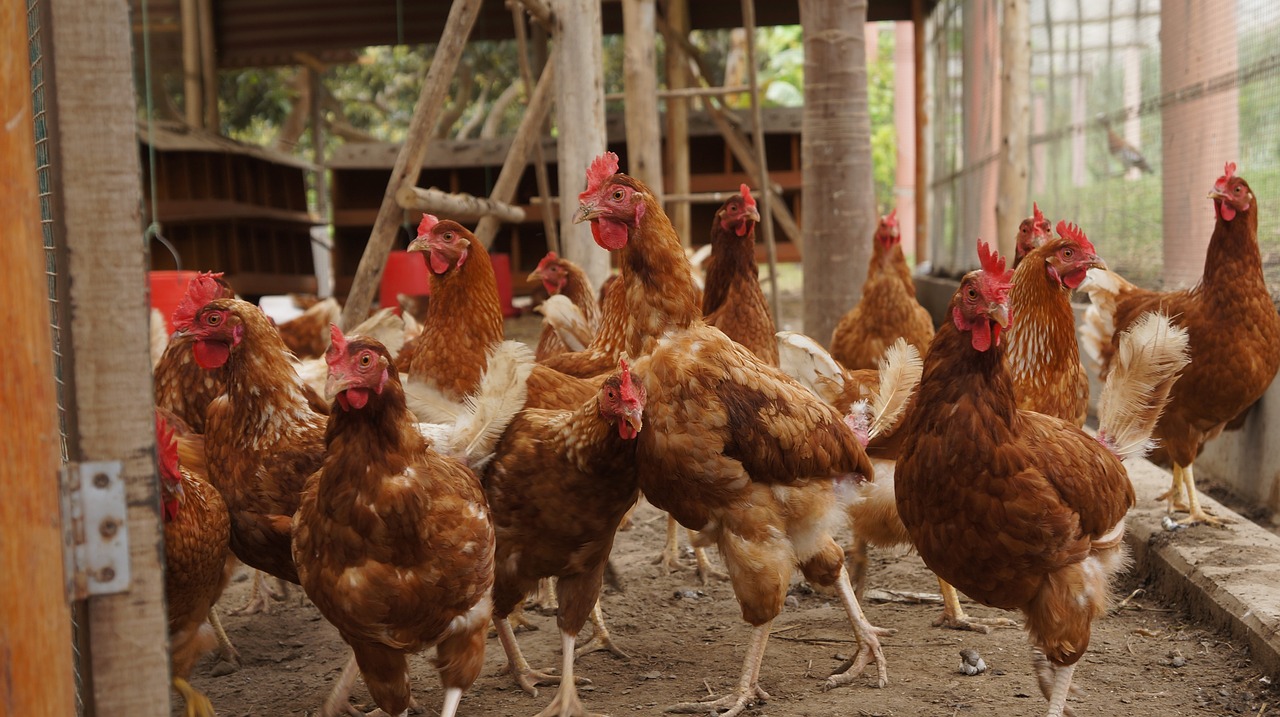Layer Farm Success Metrics
In the ever-evolving world of egg production, success is not simply a matter of chance. It is the result of careful planning, meticulous attention to detail, and a firm grasp of the secrets that separate the best from the rest.
As we embark on this journey to unveil the secrets to egg production success, we will explore the intricate web of factors that contribute to efficiency, quality, and customer satisfaction.
From the numbers that define productivity to the measures that ensure the well-being of hens, we will peel back the layers of this industry, shedding light on the hidden gems that hold the key to achieving greatness.
So, join us as we unravel the mysteries and discover the untapped potential that lies within the world of egg production.
Egg Production Efficiency
Egg production efficiency is a critical factor in the success of any poultry operation. It directly impacts the overall profitability and sustainability of the business. Maximizing egg yield and improving feed efficiency are two key aspects to consider in order to achieve optimal egg production efficiency.
Maximizing egg yield involves enhancing the number of eggs produced per hen. This can be achieved through various techniques such as genetic selection, proper nutrition, and effective disease management.
Improving feed efficiency focuses on reducing the amount of feed required to produce a single egg. This minimizes production costs. It can be achieved by formulating diets that meet the specific nutritional needs of the hens, optimizing feed conversion ratios, and minimizing feed wastage.
Hen Health and Welfare
Hen health and welfare play a crucial role in the overall success and profitability of egg production operations. To ensure the well-being of hens and optimize their productivity, attention must be given to hen nutrition and housing.
Here are four key factors to consider:
- Hen nutrition: Providing a balanced diet that meets the nutritional requirements of hens is essential. This includes providing adequate protein, vitamins, minerals, and energy sources to support egg production and overall health.
- Hen housing: Providing comfortable and suitable housing is important for hen well-being. The housing should provide sufficient space, proper ventilation, and appropriate temperature control to prevent stress and disease.
- Disease prevention: Implementing effective biosecurity measures and vaccination programs can help prevent the spread of diseases among hens, reducing mortality rates and increasing overall flock health.
- Behavior enrichment: Ensuring hens have access to stimulating environments, such as perches and nesting areas, encourages natural behaviors and reduces stress levels, leading to improved welfare and productivity.
Egg Quality
The measurement and evaluation of egg quality is imperative for ensuring the success and profitability of egg production operations. Egg quality is determined by various factors such as eggshell strength and egg yolk color. Eggshell strength is crucial as it affects the egg’s ability to withstand handling and transportation, reducing the risk of breakage. On the other hand, egg yolk color is an important indicator of nutritional content and consumer preference.
To emphasize the importance of these factors, the table below provides an overview of the impact of eggshell strength and egg yolk color on egg quality:
| Factors | Impact on Egg Quality |
|---|---|
| Eggshell Strength | Determines egg’s ability to withstand handling and transportation, reducing breakage risk |
| Egg Yolk Color | Indicator of nutritional content and consumer preference |
Labor Efficiency
To ensure optimal productivity and economic viability in egg production operations, it is essential to focus on maximizing labor efficiency. Improving efficiency can help reduce costs and increase profitability. Here are four cost-effective measures that can be implemented to improve labor efficiency in egg production:
- Automation: Investing in automated equipment such as feeders, waterers, and egg collection systems can significantly reduce the time and effort required for manual labor tasks.
- Streamlined processes: Analyzing and optimizing the workflow within the production facility can help eliminate unnecessary steps and reduce time wastage, allowing workers to accomplish tasks more efficiently.
- Training and education: Providing comprehensive training and ongoing education to employees can enhance their skills and knowledge, enabling them to perform tasks more effectively and efficiently.
- Workforce management: Implementing effective scheduling and task allocation systems can ensure that labor resources are utilized optimally, minimizing idle time and maximizing productivity.
Product Quality and Customer Satisfaction
Product quality and customer satisfaction are crucial factors in the success of egg production operations. Ensuring that the eggs meet high standards of quality and that customers are satisfied with their purchase is essential for maintaining a positive reputation and building a loyal customer base.
One way to gauge customer satisfaction is through customer feedback, which can provide valuable insights into areas that may need improvement.
Additionally, egg packaging design plays a significant role in both product quality and customer satisfaction. Packaging should be designed to protect the eggs during transportation and storage, reducing the risk of breakage and maintaining their freshness. A well-designed package can also enhance the overall customer experience, making it easier for consumers to handle and store the eggs.
Industry Benchmarks
In order to assess the performance of egg production operations, it is important to establish industry benchmarks that serve as reference points for key metrics such as mortality rate, average egg weight, labor productivity, and egg breakage rate. These benchmarks allow producers to compare their performance against industry standards and identify areas for improvement.
Here are four important industry benchmarks in egg production:
- Average mortality rate in the egg production industry: This metric indicates the percentage of hens that die during the production cycle. Producers can compare their mortality rate to the industry benchmark to evaluate the health and welfare of their hens.
- Industry benchmark for average egg weight: This benchmark helps producers determine if their eggs are meeting the desired size and weight standards. It also reflects the efficiency of the feeding program and the overall health of the flock.
- Industry benchmark for labor productivity: This metric measures the efficiency of labor utilization in egg production. By comparing their labor productivity to the industry benchmark, producers can identify opportunities to improve operational efficiency and reduce costs.
- Industry benchmark for egg breakage rate: This benchmark indicates the percentage of eggs that break during handling and transportation. Producers can use this benchmark to assess the effectiveness of their packaging and handling practices, aiming to minimize egg breakage and improve product quality.
Calculation Methods and Tips – Mortality Rate
The calculation and monitoring of mortality rates in egg production is crucial for evaluating the health and welfare of hens and identifying areas for improvement in the operation.
Monitoring techniques for mortality rates include keeping accurate records of hen deaths, conducting regular health checks, and implementing post-mortem examinations to determine the cause of death.
To improve mortality rates, it is important to implement strategies such as maintaining proper nutrition and hygiene, providing a suitable environment with adequate space and ventilation, and promptly addressing any health issues or diseases.
Regular monitoring of mortality rates allows producers to identify trends and patterns, enabling them to make informed decisions and take proactive measures to reduce mortality and enhance the overall welfare and productivity of the flock.
Calculation Methods and Tips – Average Egg Weight
To accurately assess the productivity and quality of egg production, it is essential to understand the calculation methods and tips for determining the average egg weight. Here are some key points to consider:
- Calculation method: Calculate the average egg weight by dividing the total weight of all eggs produced by the number of eggs. This will give you the average weight per egg.
- Monitoring egg weight fluctuations: Regularly monitor the average egg weight to detect any variations. Fluctuations in egg weight can be an indication of changes in feed quality, hen health, or environmental conditions. By identifying these fluctuations, you can take appropriate measures to address any issues and maintain consistent egg weight.
- Improving egg size: If you aim to increase the average egg weight, consider adjusting the hen’s diet to include more nutrient-rich feed. Additionally, ensure that the hens have access to adequate water and a comfortable living environment.
- Consider genetic factors: Selecting hens with desirable genetic traits can contribute to improving egg size and weight. Consult with experts or breeders to identify suitable breeds or genetic lines that are known for producing larger eggs.
Calculation Methods and Tips – Labor Productivity
After understanding the calculation methods and tips for determining the average egg weight in egg production, the next important aspect to consider is the calculation methods and tips for measuring labor productivity.
Improving work efficiency and maximizing labor output are crucial for a successful egg production operation. Labor productivity can be calculated by dividing the total number of eggs produced by the total number of labor hours worked.
To monitor and improve labor productivity, it is important to track the number of eggs produced per hour of work and identify areas where productivity can be increased. This can be achieved through proper training, optimizing work processes, and implementing efficient tools and equipment.
Regularly evaluating and adjusting work schedules and tasks can also help to maximize labor output. By focusing on labor productivity, egg producers can ensure effective resource utilization and enhance overall profitability.
Calculation Methods and Tips – Egg Breakage Rate
What are the key calculation methods and tips for accurately measuring and monitoring egg breakage rate in egg production?
To effectively measure and monitor egg breakage rate in egg production, the following calculation methods and tips are essential:
- Calculation method: Divide the number of broken eggs by the total number of eggs produced, then multiply by 100 to get the percentage of egg breakage rate.
- Tip: Use a consistent and reliable system for recording and tracking broken eggs to ensure accurate calculations.
- Regular inspections: Conduct frequent inspections of egg collection and handling equipment to identify any potential causes of egg breakage.
- Tip: Implement preventive maintenance schedules to address equipment issues promptly and minimize breakage risks.
- Training and education: Provide training to farm personnel on proper egg handling techniques to prevent breakage during collection, grading, and packing.
- Tip: Emphasize gentle handling, adequate cushioning, and proper stacking to reduce the risk of egg breakage.
- Quality control measures: Implement quality control checks at various stages of egg production to identify and address any factors contributing to egg breakage.
- Tip: Regularly review and analyze data on egg breakage rates to identify trends, implement corrective actions, and reduce egg breakage costs.




